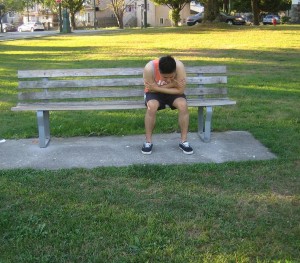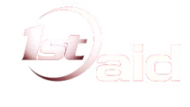A broken collarbone is a common injury especially in children. The collarbone is connected to the upper part of the breastbone to the shoulder blade. This injury can be caused falls, contact sports and trauma from vehicular accidents.
Infants can sometimes break their collarbone during the birth process. The length of the bone causes it to become susceptible to damage in the middle part but some breaks take place where the bone is connected to the scapula or rib cage.
Causes of a broken collarbone
- Falling into a shoulder or into an outstretched hand
- Sports injuries such as a direct blow to the shoulder on the field, court or rink
- Vehicular trauma from car, bike and motorcycle accidents.
- Birth injuries from passing through the birth canal

This injury can be caused falls, contact sports and trauma from vehicular accidents.
Symptoms
- Tenderness of the area
- Pain that increases when moving the shoulders
- Swelling and bruising
- A bulge on or near the shoulders
- A grinding or crackling sound when moving the shoulder
- Stiffness or limited movement of the shoulder
- Newborn babies could not move their hands for several days after a collarbone fracture during delivery.
- A crunching noise or grinding sensation especially when moving the shoulders
- Tingling or numbness felt in the arms or fingers
- Sagging shoulder
Treatment
- Apply a sling or a wrap to stabilize the arm and prevent unnecessary movement of the shoulder. It will lessen the pain by reducing the weight placed on the broken collarbone. Children are required to wear the sling for at least 1-2 months.
- A figure-eight bandage can be placed to maintain the proper position of the arm and the collarbone.
- Apply an ice pack on the affected area to lessen the pain and swelling. Avoid placing the pack directly on the skin to prevent frostbite that can worsen the condition. Wrap the pack using a towel or small piece of cloth before placing on the affected area.
- Get enough rest to prevent further injury on the affected area and promote rapid healing of the condition.
- Take the prescribed over-the-counter pain medication such as ibuprofen and naproxen to lessen the inflammation and pain.
- Eat a diet that is high in calcium such as milk, cheese, yogurt, broccoli, dark green leafy vegetables, sardines, salmon and cereal.
- Apply a warm compress on the affected area for at least 15 minutes. Avoid applying heat directly on the skin and wrap it with a towel before application to avoid burns.
- If not wearing a sling anymore, seek the help of a physical therapist for some rehabilitation exercises that is suited to the level of strength and healing. Build up slowly and if it causes pain, stop.
Disclaimer
The material posted on this page for a broken collarbone is for learning purposes only. If you want to learn to recognize and manage broken bones including a broken collarbone, register for a first aid course with a training provider near you.
